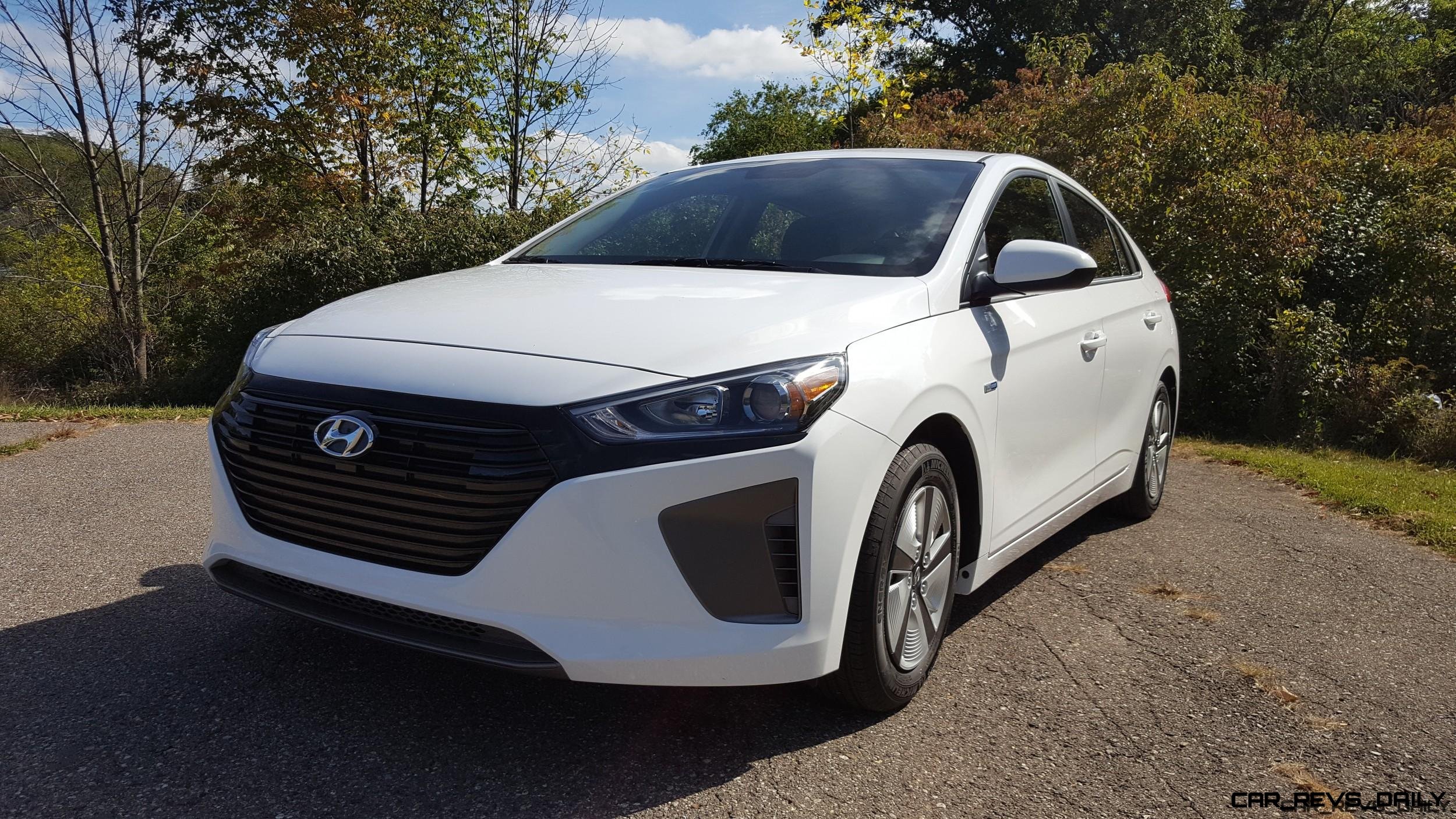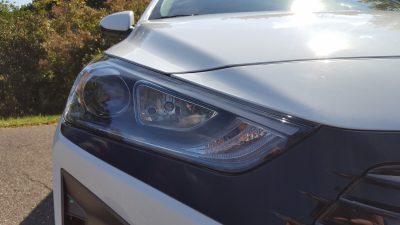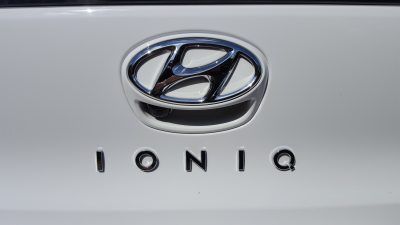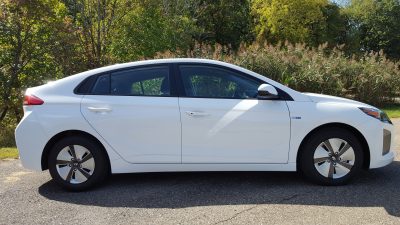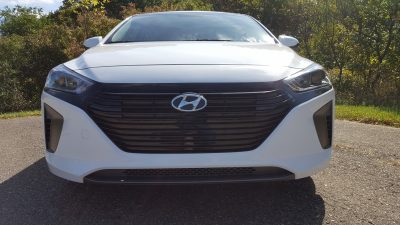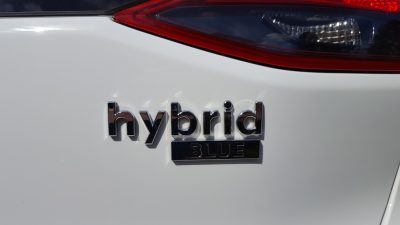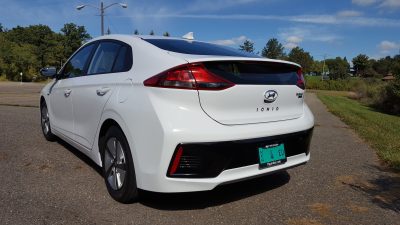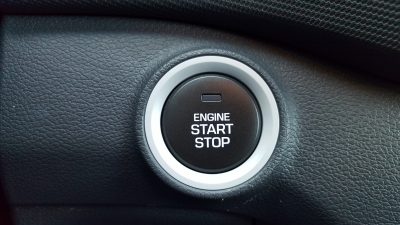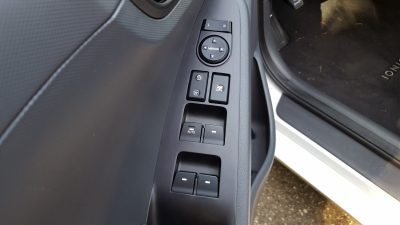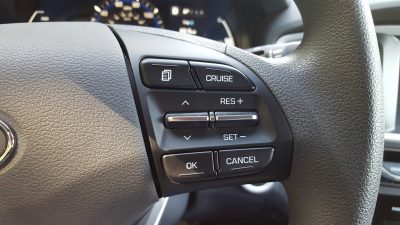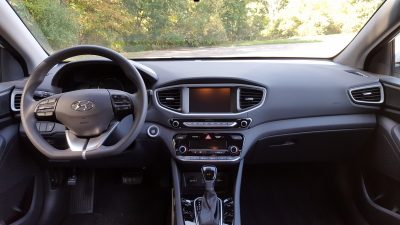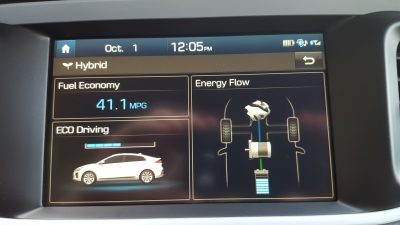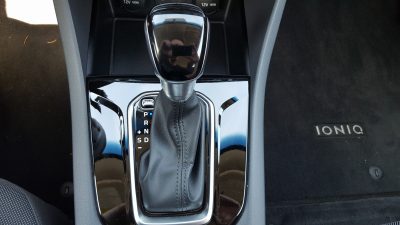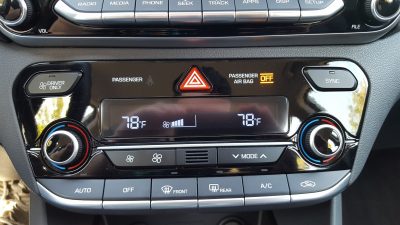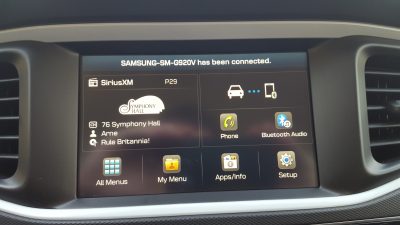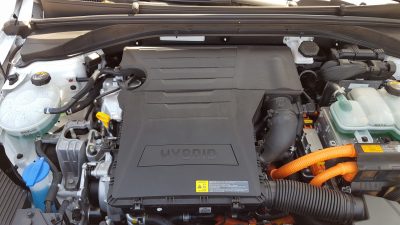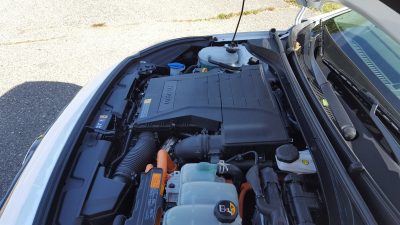Remember back when gasoline (and to a lesser extent) diesel engines, were once the sole choices for U.S. drivers looking to buy an automobile for their driveway? We sure do, and we also remember back when the idea of electric let alone hybrid offerings were mere science experiments that existed in the world of concept cars. Fast forward a few decades, and this established order has been toppled by a strong pool of hybrid vehicles, as well as the emergence of a new wave of all electric offerings. But which choice is better for consumers? And which choice will stand out from the rest of the pack in the long haul?
To find out we focused on a vehicle that currently offers buyers both options, the 2017 Hyundai Ioniq. When we last met the spunky Ioniq, it was in its all electric form, and we had the chance to discover the pros and cons of an all electric power train setup, which included a road trip to neighboring Ohio. This time, we nestled behind the wheel of its hybrid powered cousin to see which option is indeed best in everyday driving.
Unlike the loaded EV tester that last visited the Metro Detroit outpost, our hybrid equipped tester arrived in base Blue trim which serves as the entry level offering in the Ioniq Hybrid model family. Exterior styling is largely the same, with both cars resembling an aerodynamically honed poliwog. The EV version’s front fascia has a closed off front grille which gives it a slightly more elegant profile than the hybrid version which features a traditional slated front grille. Blue models like our example don’t feature the LED accent lighting that is seen in higher trims, and that causes the Blue to not standout quite as much as other eco friendly rivals. However we will give it points for offering standard push button start, as well as Android Auto and Apple CarPlay capability.
The interior of our tester continues Hyundai’s recent strides in interior design. While Blue models do feature cheaper looking plastics than their higher spec siblings, the cloth seats in our tester were reasonably comfortable, and offered commendable amounts of long distance comfort. The interior is also where the hybrid Ioniq truly stands out from its EV sibling. Wheras the EV features a futuristic button arraignment for the transmission, the hybrid receives a more conventional floor mounted shifter. Look for this setup to please older buyers that would otherwise be turned off by the button oriented layout. The dashboard continues its trend towards simplicity, and like before, offers a clean and cohesive layout. Our tester did not have navigation, but the touchscreen infotainment system delivered quick responses and was simple to use. While we do miss the EV’s digital instrument cluster, the analog gauges in the hybrid still do an excellent job delivering information and look slick in their own right.
However, it is in performance hardware where the differences truly make themselves known, and both the EV and Hybrid Ioniq models go about this in their own distinctive ways. The EV uses a 118 horsepower electric motor, and we fell in love with its whisper quiet operation, and its impressive off the line punch. Hybrid models on the other hand get their motivation from a 1.6 liter four cylinder engine that is good for a rather modest 139 horsepower and is paired with a part time electric motor. The transition between electric and gas power is relatively seamless, but the Hybrid’s main problem is that it doesn’t really stand out in anyway when being driven out on the open road. For example, the EV’s punchy demeanor made it surprisingly enjoyable in stop light sprints, but Hybrids like our tester have more mundane acceleration, and the engine’s coarse note borders between annoying and unbearable in long distance driving.
The auditory assault is worth it though when you consider that the Hybrid is an even better road trip companion than the EV. Our trip to Toledo in the EV Ioniq showed the limits of its 125 mile driving range, as well as the challenge in finding compatible charging stations. The Hybrid benefits from a much stronger gas station network, and gets 52 mpg per fill up. However, we wish Hyundai engineers would fix the six speed dual-clutch automatic, which could have smoother shifts, and caused our tester to be somewhat hesitant when accelerating or passing traffic out on the freeway. Handling was also somewhat clumsy but here, the Hybrid and the EV Ioniq are relatively equal in this regard, and neither will ever be known for their sporting pedigree. But look past its dynamic flaws, and the Ioniq still presents itself as a versatile hatchback that can appeal to young buyers looking for a commendable balance of efficiency and practicality in their daily commute.
Hyundai also aims to establish the Ioniq lineup as a solid value play and has accordingly constructed a pricing ladder that allows it to target the Toyota Prius and other green rivals where it matters the most. Base Ioniq models start at $22,200, with our lightly optioned Blue grade tester ringing in at a still budget friendly $23,160 when the $835.00 destination fee and our car’s $125.00 carpet floor mats are factored into the equation. Buyers looking for more technology can opt for the SEL and Limited models which have higher prices to reflect their more tech focused nature. In comparison the EV version starts at $29,200, and is currently limited to California buyers though Hyundai claims that it will eventually make its way to more states in the near future.
When it comes down to it, choosing which green option is best will ultimately depend on what buyers have in mind for their Ioniq. The EV is a natural born city commuter, but its limited range and the relative rarity of fast charging stations hamper its ability to be a proper companion out on long road trips. The Hybrid solves the range problem, but loses some of the futuristic elements that help define the EV model in the process. Either way, the 2017 Hyundai Ioniq is redefining the basic concept of what a proper green offering should be, and we look forward to seeing what else is in store for the Ioniq over the next few years especially the upcoming plug-in hybrid model.

Carl Malek has been an automotive journalist for over 10 years. First starting out as a freelance photographer before making the transition to writing during college, his work has appeared on numerous automotive forums as well as websites such as Autoshopper.com.
Carl is also a big fan of British vehicles with the bulk of his devotion going to the Morgan Motor Company as well as offerings from Lotus, MG, and Caterham. When he is not writing about automobiles, Carl enjoys spending time with his family and friends in the Metro Detroit area, as well as spending time with his adorable pets.

